Australia So Much to See
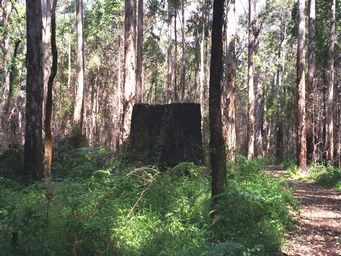
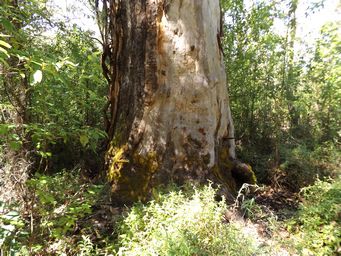
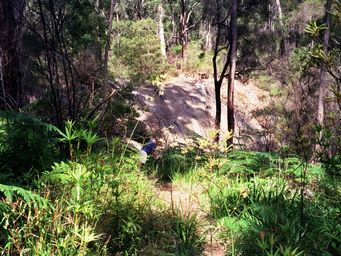
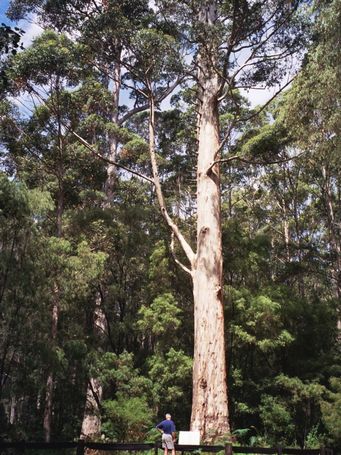
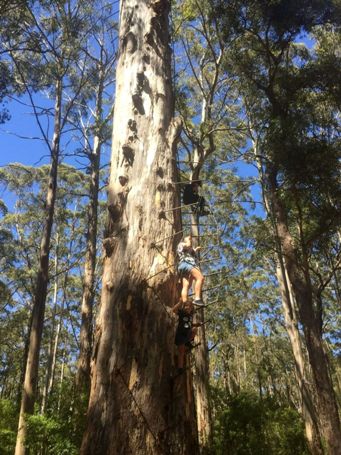
Karri trees (Eucalyptus diversicolor)
Karri trees (Eucalyptus diversicolor)
The Boorara Tree, a former fire lookout near Northcliffe, was pegged in 1952. It is 71 metres tall, and one of very few old growth forest trees remaining in the location. This was never open to the public for climbing. When no longer used for fire watch, and due to the tree being considered unsound, the upper section of the trees with the hut was removed, and the lower pegs were removed to prevent access.
A larger sized wheel chair accessible model of the original hut is on display at the site to show visitors what these tree top cabins looked like.
These trees now have a line of lighter pegs running parallel to the climbing rungs, with wire netting between the two lines being a more recent addition.
Karri Trees at Denmark showing this seasonal coloration (above and at right).
The Diamond Tree, at 51 metres is not so tall, but an extended timber hut at the top still towered over the neighbouring trees. This tall timber hut at the top has not been replaced and is still intact. With the fire surveillance network being abandoned
in the 1970s, the Diamond Tree was used again for this purpose in 1994. After 75 years of being climbed by fire watch personnel
and the adventurous public, this tree was considered unsound, so for public safety was closed to climbing in 2019 and the lower pegs
removed.
Once the ladder was created by hammering in wooden pegs, but these were later replaced with metal pegs. Scars up the Diamond Tree show an earlier peg line.
# Dave Evans Bicentennial
Tree has a similar viewing platform, as well as having platforms part way up the tree. This 65 metre tree was pegged in 1988
as a climb, having not been used earlier as a fire lookout. It has however been used as a fire lookout on occasions when the
planes could not fly.
The area was logged in the 1950s and the present Karri trees seen here are relatively young trees. A remaining stump shows the size of the trees that were logged.
To experience more of the Karri trees of this area, there is a good campground in the Shannon National Park. This campsite has been rebuilt following being burnt out in a devastating bushfire during January and February 2015.
There is a 2.5 kilometres downhill walk from the parking area at the Boorara Tree to Lane Poole Falls, a small seasonal waterfall
on the Canterbury River.
The was once a network of nine trees once used as fire lookouts but one was burnt down early, leaving eight which were used until
1973, but none of these are the tallest Karri tree. These were supplemented by ten lookout towers built on hills, giving a total
of eighteen fire lookouts.
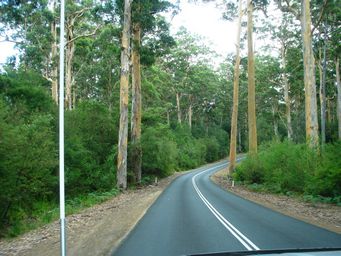
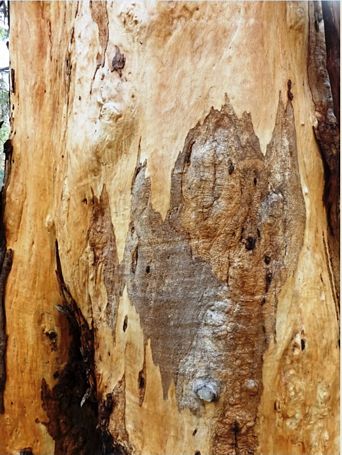
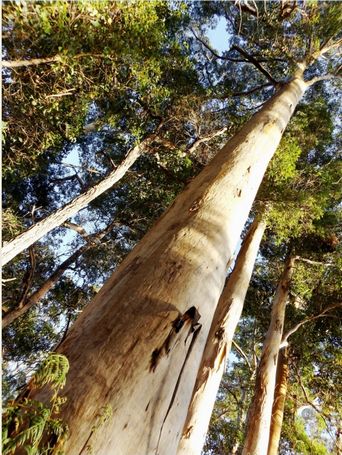
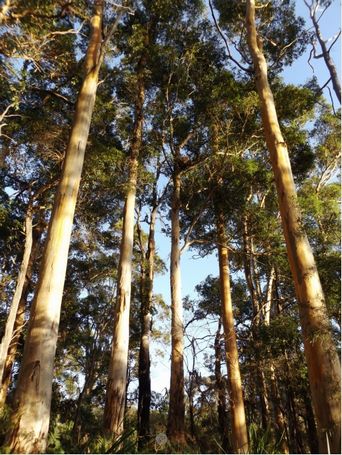
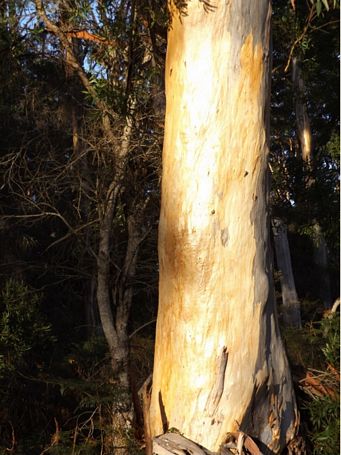
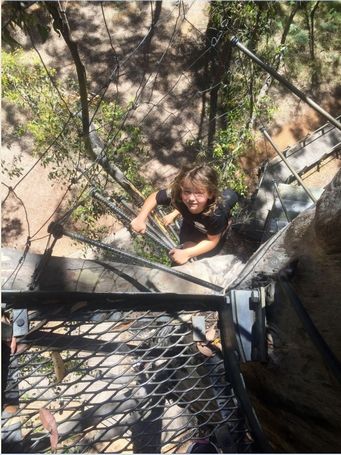
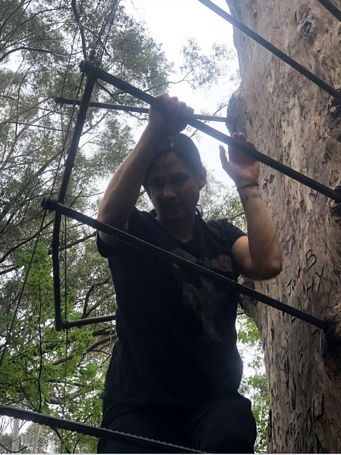
From the mid 1890s Karri paving blocks for use in the streets of England's major cities were the main timber product exported. At
the turn of the century 50% of Western Australia's timber exports went to Great Britain as pavers. Trees thought to be up to
90 metres tall were logged.
Karri and Jarrah were also exported to places like South Africa where, as in Australia, they were used in mines, for railway sleepers,
and for the construction of jetties and bridges. In the early part of the twentieth century 95% of local timber was sold to England,
eastern Australia, India, South Africa and New Zealand.
Karri timber has been used extensively in the building industry, particularly
in roofs for the length and knot-free quality of the boards. The wood is also ideal for flooring, furniture, cabinetry and plywood.
Woodchips were first exported from the region in the 1970s to supply paper pulp manufacturers, mainly in Japan. Both Karri and
Jarrah trees in old growth forests were felled for export woodchips. Since 1976, when wood chipping began in Western Australia,
approximately fifteen million tonnes of native hardwood woodchips have been exported to Japan.
Now much of the woodchip exported comes from softwood plantation timber.
The Dave Evans Bicentennial Tree was also closed to climbing at that time, and also remains temporarily closed with no opening date given. Opened July 2024
A new adventure has been commenced by Aerial Adventure Pemberton, with a Ropes and Flying Fox course in the Gloucester National Park. January 2024
2nd May 2024
8th July 2024